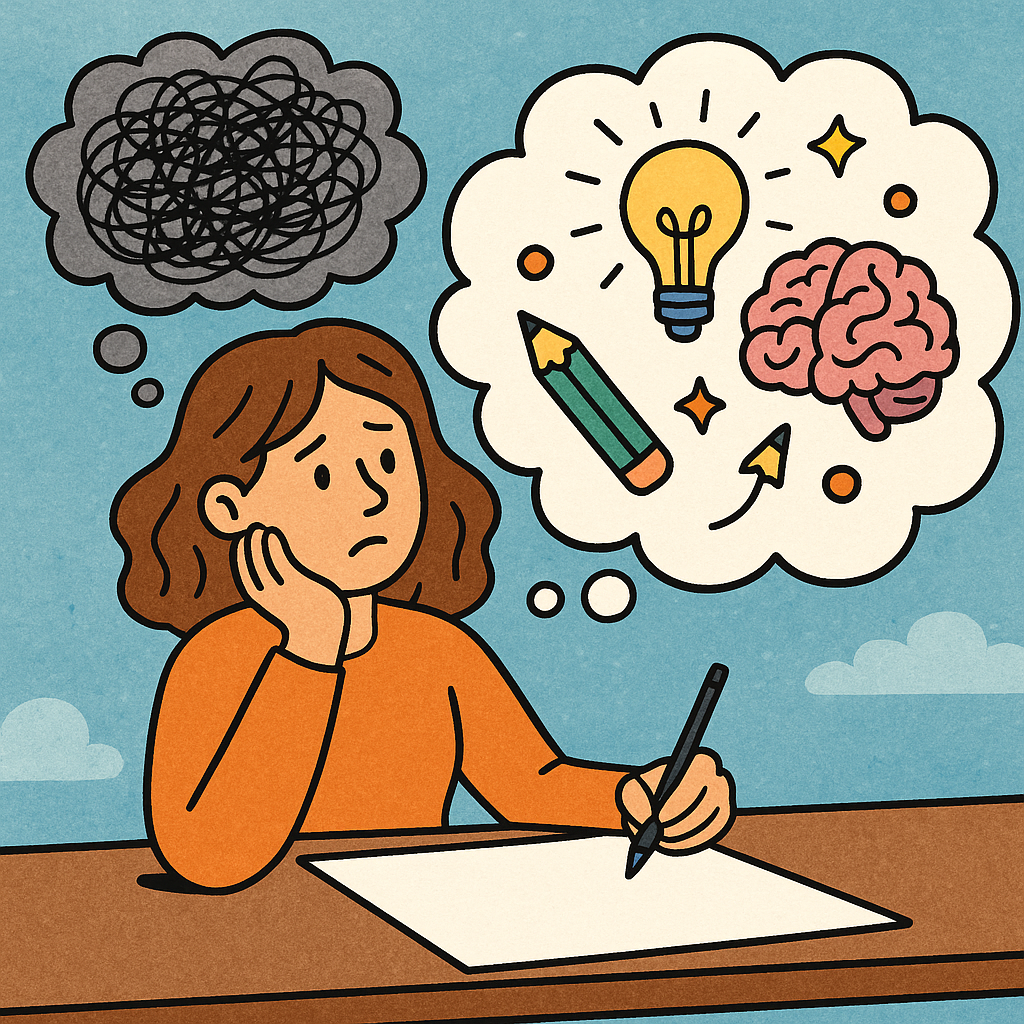Creating mental space cultivates the freedom to think freely—it’s the blank canvas where innovation takes shape. Research shows decluttering your mind and environment unlocks rich creative potential and fosters fresh perspectives. Here’s why this matters now more than ever.

What is mental space and why it matters
“Mental space” refers to the psychological and physical room needed for free, open thinking—unshackled by distractions. In the bustling, always‑on world of remote work, constant notifications, and information overload, carving out mental space is crucial for:
- Divergent thinking: Generating many novel ideas.
- Attention restoration: Recovering focus so deep work becomes possible.
- Neuroarchitectural benefits: Designing supportive environments.
These emerging trends—from digital detoxes to VR‑inspired space design—demonstrate that creativity thrives when the mind is calm and uncluttered.
1. Decluttering the environment = clarity in your head
Decluttering your workspace or home helps calm mental chaos. A University of Connecticut study found clutter increases stress, anxiety, and interferes with clear thinking. Another UCLA-led study found higher cortisol levels and less sleep quality in those with messy spaces.
But slightly messy environments may spark creative thinking. In a classic experiment by Kathleen Vohs (U Minnesota), people in a messy room were 28% more creative on a brainstorming task than those in neat spaces. The key? Strip materials down to essentials, then allow a “creativity corner”—a controlled chaos centre—to inspire divergent thought.
2. Attention Restoration: Nature as a mental reset
When mental resources run low, nature resets attention. Kaplan & Kaplan’s Attention Restoration Theory (ART) explains how soft, effortless fascination—like leaves rustling or clouds drifting—helps the brain recover focus.
Practical implications:
- Micro‑breaks: Step outside, look at greenery.
- Workspace design: Add potted plants or natural light.
- Neuroarchitecture: VR studies show curved rooms with natural views boost creativity and lower stress.
3. Digital detox & purposeful distraction
Our digital lives constantly interrupt creative flow—notifications, social media feeds, endless tabs. Studies show regulated social media breaks reduce burnout and restore focus. Designating “no-screen” periods helps lengthen attention spans.
Paradoxically, purposeful distraction—such as going for a short walk or ambient noise—helps incubate ideas. Mind-wandering allows for associative thinking; Mehta et al. found moderate noise (≈70 dB) boosts creativity. And The Guardian reports that even a brief walk can significantly enhance divergent thinking.
4. Emerging Trend: “Micro‑retiring” for creativity
A new Gen Z trend, micro‑retiring, involves taking short sabbaticals to recharge and foster creativity. These mini‑breaks—spanning weeks or months—allow time for exploration, learning, and material-free thinking.
✔️ Tip: Plan micro‑retiring around creative goals or passion projects, not just mental rest. The payoff can be fresh insights—but remain mindful of career continuity.
5. Creating rituals that preserve mental space
To make mental space part of your routine, try structured habits:
- Morning clarity hour – Start by journaling or planning before screens on.
- Creative corner – Dedicate a zone for loose materials and scents.
- Transition rituals – Use short walks, stretching, or tea breaks to close focus cycles.
- Timed device breaks – Implement phone-free windows during deep work.
- Weekly VR/nature sync – Spend 15–30 minutes in nature or VR nature simulation to reset.
These rituals support both convergent and divergent thinking—alternating laser focus with idea generation.
6. How mental health ties into creative flow
Creative performance depends heavily on mental health. BetterUp found people struggling with mental health reported creative efforts nearly 50% harder, while those in positive mental states produced work more smoothly.
Given recent survey data—63% of Gen Z report poor mental health—prioritizing mental space isn’t optional, it’s essential.
So mental space isn’t just productivity booster—it’s foundational psychic infrastructure.
7. Practical guide: 5‑step framework to build mental space
1: Clear the room
- Remove digital interruptions.
- Tidy visible clutter; schedule controlled fun mess zones.
2: Add natural stimuli
- Surround yourself with daylight, plants, or nature sounds.
- During breaks, step outside for 5–10 minutes.
3: Plan device downtime
- Use settings like “focus mode.”
- Pick daily no-device windows or social‑media‑free evenings.
4: Leverage walking breaks
- After 45–60 minutes of deep work, take a 5‑minute walk.
- Or just sit outside and breathe.
5: Reflect and adjust
- Keep a short log: what ideas surfaced after breaks?
- Note boosting patterns and fine‑tune your environment.
8. FAQs on mental space for creativity
Q: Isn’t clutter helpful for ideas?
Yes—but only when controlled. Messy zones spark divergent thinking; full-blown clutter increases stress .
Q: What if I can’t go outside?
Introduce natural light, greenery, nature-sound apps, or VR views .
Q: How often should I unplug?
Aim for at least 30 minutes daily screen-free. Weekly digital detox helps restore long-term focus.
Conclusion: Mental space as your creative MVP
In today’s relentless pace, the secret ingredient for creativity isn’t more hustle—it’s space: mental, physical, and temporal. By decluttering mind and environment, harnessing nature’s restorative power, and scheduling meaningful breaks—whether digital, environmental, or ritualistic—you’ll fuel divergent ideation and deep focus. Emerging trends—from micro‑retiring to neuroarchitecture—confirm mental space is more than wellness—it’s a creative imperative.
Give your brain room to breathe and watch your best ideas unfold.
References
Smith, A. L. (2023). Creating Mental Space to Boost Creativity. Journal of Creativity in Mental Health. Retrieved from https://www.tandfonline.com
Brown, J. M. (2022). Freeing Up Your Mental Space Is Really Important for Creativity. But I Also Have a Day Job. Retrieved from https://butialsohaveadayjob.co
Kaplan, R., & Kaplan, S. (1988). The Experience of Nature: A Psychological Perspective, exploring attention-restoration as a key to creative thought. Cambridge University Press. Retrieved from https://en.wikipedia.org






